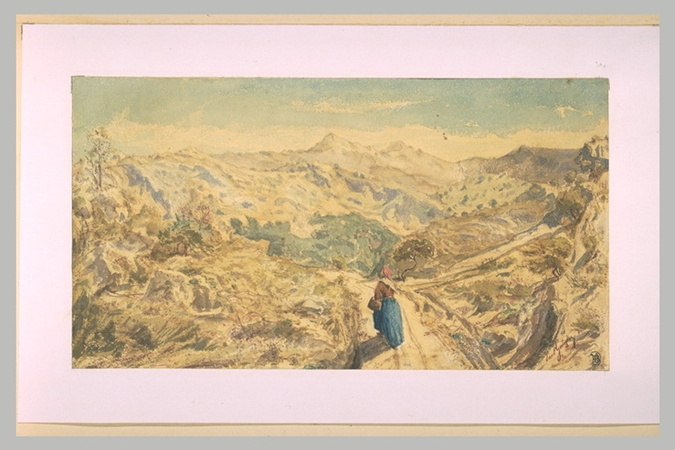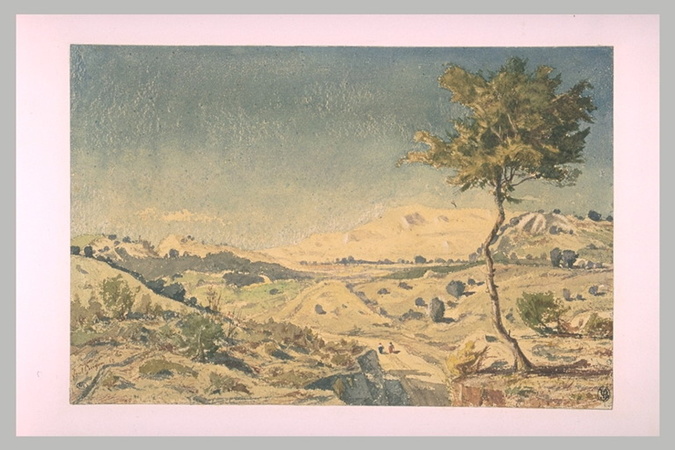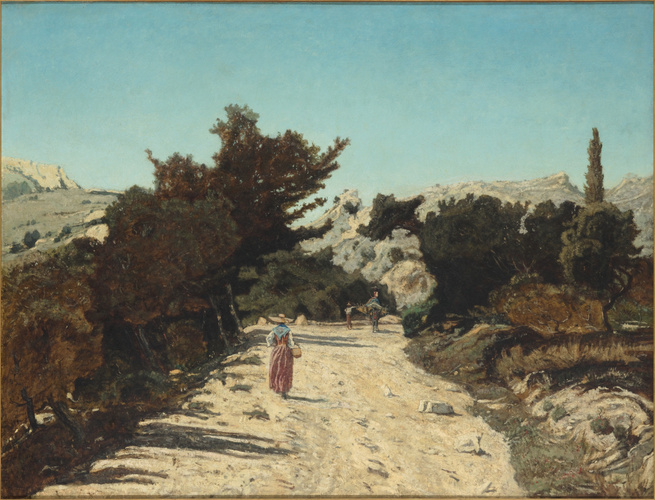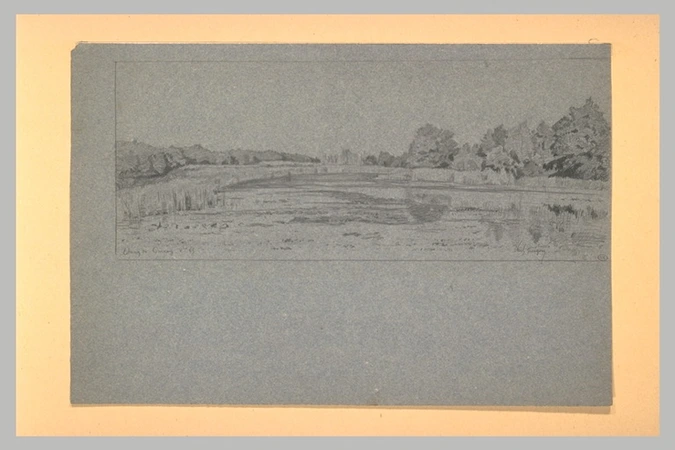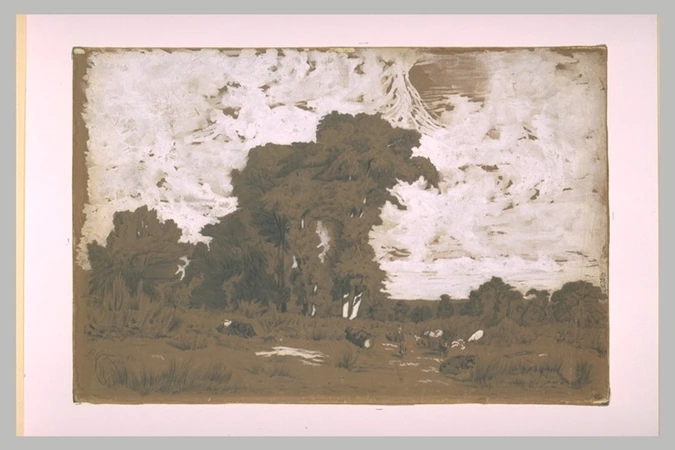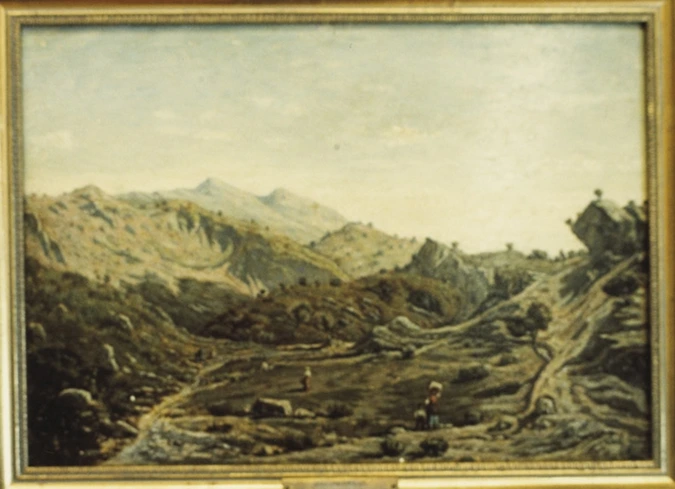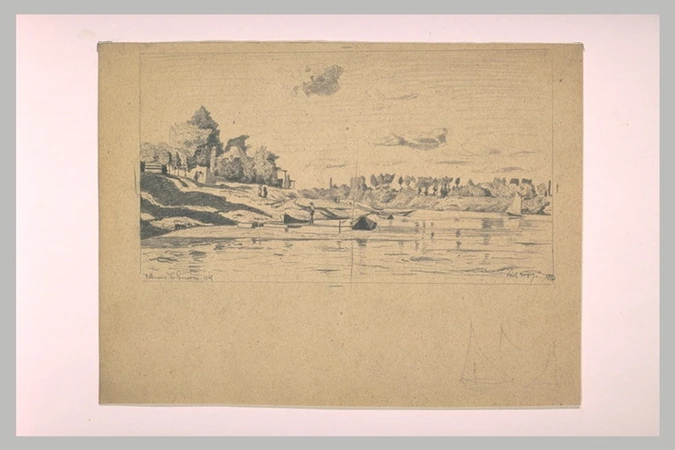Lavandière
Guigou was 26 years old when he painted La Lavandière. He was still at the very beginning of his career, studying at the Beaux-Arts school in Marseille. This school was, without doubt, one of the most original and active in France at that time. Its director, Emile Loubon, close to the Barbizon painters, inspired a love of landscape in his pupils, and encouraged them to go out and paint "from nature".
The painter chose to depict his washerwoman from behind. This position gives the character a certain mysteriousness. There are few elements indicating the nature of her work. The barely defined background is like a set for a mise en scene of Provence itself.
The plunging viewpoint cuts out the sky, and gives a feeling of heaviness and despondency. It is unlikely, however, that Guigou wanted to put over a social message. His aim was rather to express the reality of his region; above all he sought to capture all its beauty, particularly its light and especially the overwhelming heat, laden with dust. The painter uses faded, mineral colours, as if he had mixed them with the pigments of the earth. This impression is further emphasised by the thick, uneven texture of the painting.
In this work, Guigou brings everything into play to create a "faithful and eternal portrait of his small country", this "Empire of the Sun" in the words of the Provençal writer Frédéric Mistral.



